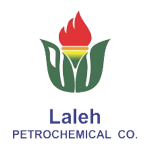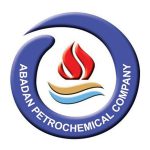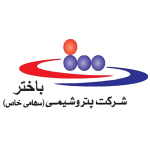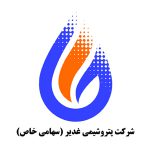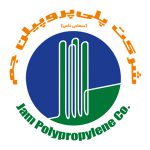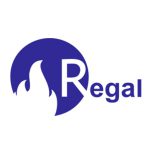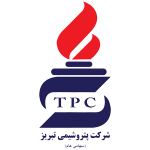MEG
Monoethylene Glycol (MEG) Monoethylene glycol, also known as ethylene glycol, is a colorless, odorless, and slightly viscous organic compound with the chemical formula C2H6O2. It is classified as a diol or glycol due to its two hydroxyl (OH) groups, which are attached to adjacent carbon atoms in the molecule. This material has a molecular weight of 62.07 gr/mol and density of 1.11 gr/cm3. MEG is widely used in various industrial applications, with its primary use being as a raw material in the production of polyester fibers and polyethylene terephthalate (PET) resins. These polyester materials are utilized in the manufacturing of textiles, bottles, packaging films, and other synthetic products. It serves as an efficient component in coolants, antifreeze, and other products in addition to being the main raw material for the production of polyester fibers. This material has low freezing point, low toxicity, and high solubility in organic solvents and water. Its flammability, corrosiveness, and environmental effect are some of its disadvantages. Exporting MEG to various countries with the best price has been one of the achievements of Petro Nour Mehr Company in recent years. For more accurate information regarding prices or purchasing the product, it is better to contact the sales department of Petro Nour Mehr Company.
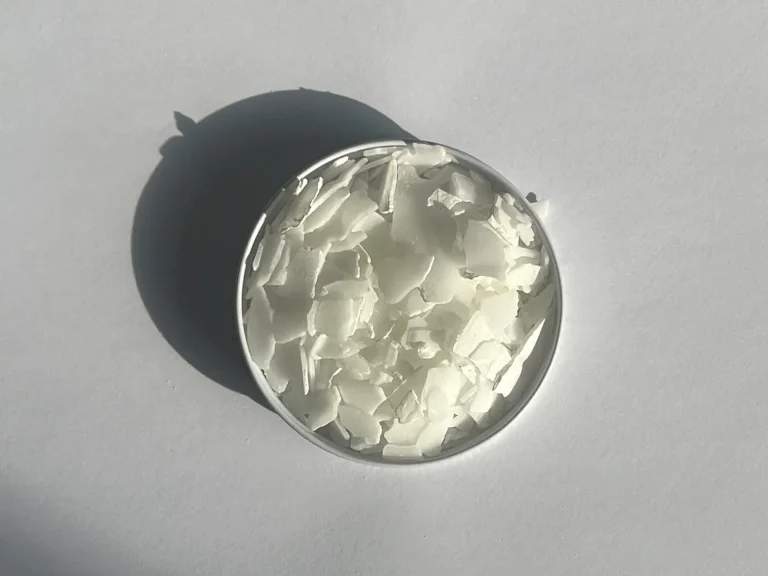
MEG Manufacturers in Iran
In the petrochemical industry of Iran, several companies and production units are engaged in the production of MEG. These companies include:
• Shazand Arak Petrochemical Company
• Marun Petrochemical Company
• Morvarid Petrochemical Company
• Farsa shimi Petrochemical Company
These units are among the largest MEG producers in Iran and play a significant role in supplying domestic needs and exporting this material to global markets.
MEG Manufacturers Worldwide
Major MEG manufacturers worldwide include:
This material is produced by various chemical companies worldwide. Some of the prominent manufacturers of MEG include:
- Dow Chemical Company
- Shell Chemicals
- BASF SE
- ExxonMobil Chemical
These companies operate large-scale production facilities and supply this material to various industries worldwide, including textiles, automotive, packaging, cosmetics, and petrochemicals. They adhere to strict quality standards and safety protocols to ensure the reliability and consistency of their material products.
Applications of MEG
Monoethylene glycol finds a wide range of applications across various industries due to its versatile properties. Some common applications of MEG include:
- Antifreeze and Coolants: This material is commonly used as a key ingredient in antifreeze formulations for automotive engines, HVAC systems, and industrial equipment. Its ability to lower the freezing point of water helps prevent the formation of ice and protects engines and cooling systems from damage in cold temperatures.

- Polyester Resins: It is a vital building block in the production of polyester resins, which are widely used in the manufacture of fibers, textiles, packaging materials, and coatings. It reacts with terephthalic acid or dimethyl terephthalate to form polyethylene terephthalate (PET) resin, a versatile material with excellent mechanical properties and chemical resistance.

- PET Bottles: PET resin derived from this material is extensively used in the production of PET bottles for packaging beverages, personal care products, pharmaceuticals, and household chemicals. These bottles are lightweight, transparent, shatter-resistant, and recyclable, making them ideal for packaging applications.

- Solvents: This material serves as a solvent in various industrial processes, including the manufacturing of paints, inks, dyes, adhesives, and cleaning agents. Its ability to dissolve a wide range of substances makes it valuable in formulating products and facilitating chemical reactions.
- Humectants: It is utilized as a humectant in cosmetic and personal care products such as skin creams, lotions, and hair care products. It helps retain moisture, prevents drying and cracking, and imparts a smooth texture to the products.
- Natural Gas Dehydration: It is commonly used in the natural gas industry for dehydration purposes. It removes water vapor from natural gas streams to prevent pipeline corrosion, ensure efficient gas processing, and meet pipeline specifications.

- Deicing Fluids: This material is an essential component of deicing fluids used to remove ice and snow from aircraft, runways, roads, and bridges during winter months. It lowers the freezing point of water, enabling the fluids to melt ice and improve traction on surfaces.
These are just a few examples of the diverse applications of MEG across different industries, highlighting its importance as a versatile chemical compound.

Storage Conditions for MEG
Monoethylene glycol (MEG) should be stored under appropriate conditions to maintain its quality and stability. Here are the recommended storage conditions for MEG:
- Temperature: This material should be stored in a cool, dry, and well-ventilated area. The storage temperature should ideally be below 25°C to prevent degradation and minimize the risk of evaporation.
- Avoid High Temperatures: Exposure to high temperatures should be avoided, as elevated temperatures can accelerate chemical reactions and lead to degradation of it. Temperatures above 40°C should be especially avoided.
- Protection from Sunlight: This material containers should be stored away from direct sunlight and sources of heat, as exposure to ultraviolet (UV) radiation can cause degradation and discoloration of the product.
- Container Material: It should be stored in containers made of suitable materials such as stainless steel, high-density polyethylene (HDPE), or glass. Avoid using containers made of materials that may react with MEG or cause contamination.
- Seal Containers Properly: Ensure that containers are tightly sealed to prevent moisture absorption and contamination. Proper sealing helps maintain the purity and quality of the MEG over time.
- Labeling: Clearly label this material containers with appropriate safety information, product identifiers, and handling instructions. This helps prevent confusion and ensures safe handling and storage.
- Compatibility: Store this material away from incompatible materials such as strong oxidizing agents, acids, and alkalis, as well as food and beverages, to prevent contamination and chemical reactions.
Handling Precautions: Follow standard safety precautions when handling and storing this material, including wearing appropriate personal protective equipment (PPE) such as gloves, safety goggles, and protective clothing.
By following these storage conditions, MEG can be preserved effectively, maintaining its quality and integrity for its intended applications.
Packaging for MEG
Monoethylene glycol (MEG) is commonly packaged and stored in various types of containers suitable for its transportation and use in different industries. The packaging for MEG typically includes:
- Drums: MEG is often packaged in standard-sized drums made of materials such as carbon steel, stainless steel, or high-density polyethylene (HDPE). These drums usually have a capacity ranging from 200 liters to 250 liters and are suitable for bulk storage and transportation.
- Intermediate Bulk Containers (IBCs): MEG may also be stored and transported in IBCs, which are large containers with a capacity of 1000 liters or more. IBCs are constructed from materials like high-density polyethylene (HDPE) or composite materials and are equipped with a pallet base for easy handling.
- Tanker Trucks: For bulk transportation, MEG is often transported in tanker trucks or railcars. These specialized vehicles are designed to safely transport large quantities of liquid chemicals and may have built-in heating or cooling systems to maintain the desired temperature during transit.
- ISO Tanks: MEG can also be shipped internationally in ISO tanks, which are standardized containers suitable for intermodal transportation via road, rail, or sea. ISO tanks have a capacity similar to tanker trucks and provide a secure and efficient means of transporting MEG in liquid form.
- Flexitanks: In some cases, MEG may be transported in flexitanks, which are large, flexible containers made of polyethylene or other suitable materials. Flexitanks are designed to fit into standard shipping containers and can hold up to 24,000 liters of liquid, offering a cost-effective solution for transporting MEG in bulk.
Regardless of the type of packaging used, it is essential to ensure that containers are properly sealed, labeled, and handled in accordance with safety regulations and guidelines to prevent spills, contamination, or other hazards during storage and transportation.
Advantages and Disadvantages of MEG
This material has several advantages and disadvantages:
Advantages :
- Hygroscopic Properties: This material has hygroscopic properties, meaning it attracts and holds water molecules, making it useful in applications such as dehumidification, air conditioning systems, and antifreeze formulations.
- Versatility: It is a versatile chemical compound used in various industries, including textiles, automotive, packaging, cosmetics, and petrochemicals.
- Antifreeze Agent: This material is commonly used as an antifreeze agent in automotive cooling systems and as a component in windshield washer fluid to prevent freezing during cold temperatures.
- Solvent: It serves as a solvent in numerous applications, including the production of resins, plastics, and adhesives.
- Chemical Intermediate: This material is used as a chemical intermediate in the production of polyester fibers, polyethylene terephthalate (PET) resins, and other polymers.
- Low Volatility: It has low volatility, making it suitable for applications where low vapor pressure is desired, such as in antifreeze formulations and hydraulic fluids.
- Biodegradability: It is biodegradable under aerobic conditions, which can reduce its environmental impact when properly managed.
- Disadvantages:
- Toxicity: While this material is generally considered safe for its intended industrial applications, it can be toxic if ingested in large quantities. Proper handling and storage procedures are necessary to prevent exposure.
- Flammability: This material is flammable and may pose a fire hazard if exposed to open flames or high temperatures.
- Corrosive: It can be corrosive to certain metals and materials, requiring compatibility considerations in equipment and storage vessel selection.
- Environmental Impact: Improper disposal of this material can lead to environmental contamination and adverse effects on ecosystems. Therefore, proper waste management practices are essential.
- Price Volatility: The price of it is subject to market fluctuations and can experience volatility due to factors such as supply-demand dynamics, feedstock prices, and geopolitical factors.
Overall, while this material offers numerous advantages in various industrial applications, careful handling, storage, and disposal are necessary to mitigate potential risks and ensure its safe and effective use.
Physical and Chemical Properties of MEG :
This material has several physical and chemical properties that make it valuable in various industrial applications:
- Physical Properties:
- Appearance: It is a colorless, odorless, and viscous liquid at room temperature.
- Melting Point: This material has a melting point of around -12.9 °C.
- Boiling Point: The boiling point of this material is approximately 198 °C.
- Solubility: It is highly soluble in water, alcohol, and acetone.
- Viscosity: It exhibits moderate to high viscosity, which varies with temperature.
- Chemical Properties:
- Hygroscopicity: This material is hygroscopic, meaning it readily absorbs moisture from the air.
- Reactivity: This material is relatively stable under normal conditions but can react with certain chemicals to form derivatives.
- Boiling Point Elevation: It exhibits a boiling point elevation phenomenon when dissolved in water, which is utilized in antifreeze formulations to lower the freezing point of the solution.
- Flammability: This material is flammable and can ignite if exposed to an open flame or high temperatures.
- Toxicity: While this material is considered relatively low in toxicity, ingestion or inhalation of large quantities can cause adverse health effects. It is classified as slightly toxic by ingestion and inhalation and may cause irritation to the skin and eyes.
These properties make it suitable for various applications, including antifreeze formulations, polyester production, solvents, chemical intermediates, and as a component in pharmaceuticals and personal care products. However, proper handling, storage, and disposal practices are necessary to ensure safe usage and minimize environmental impact.
Types of MEG grades:
This material is available in several different grades, each tailored to specific industrial applications. Some common types of MEG grades include:
- Industrial Grade: This is the most basic grade of this material, suitable for various industrial applications such as antifreeze formulations, coolants, solvents, and chemical intermediates. It may have lower purity compared to other grades.
- Technical Grade: Technical-grade MEG is often used in applications where higher purity is required but not necessarily to the extent needed for pharmaceutical or food applications. It meets certain specifications for industrial use but may contain impurities that are not suitable for more sensitive applications.
- USP Grade: It that meets the standards outlined in the United States Pharmacopeia (USP) is classified as USP grade. This grade is suitable for pharmaceutical and medical applications where purity and quality standards are critical.
- Food Grade: This material designated as food grade meets the strict regulations and standards set by regulatory bodies such as the Food and Drug Administration (FDA) in the United States and the European Food Safety Authority (EFSA) in the European Union. It is safe for use in food and beverage applications.
- Reagent Grade: Reagent-grade MEG is of high purity and is often used in laboratory settings, chemical analysis, and research where precise and consistent results are required.
These are some of the common types of it grades available, each serving specific purposes and meeting distinct quality and purity standards.
How to Buy Polyethylene?
- Buy from a reputable and authorized supplier that holds necessary certifications and guarantees quality.
- Compare the prices of these materials in different markets and compare them with the global market price.
- Examine the sales conditions regarding quantity, delivery time, packaging, transportation methods, and payment terms.
- If you intend to import polystyrene from foreign countries, investigate customs and legal regulations and comply with export and import regulations.
- Contact bravopolymer to obtain the most suitable export price based on your conditions.
- After signing the contract, you can place your order.
- Secure and suitable payment methods according to customer preferences are provided by the company.
- Then, the loading stage is completed by selecting and introducing a transport company.
- Necessary documents for customs clearance at the destination city are also provided to customers by bravopolymer.
The largest distributor of polymers in the Middle East



